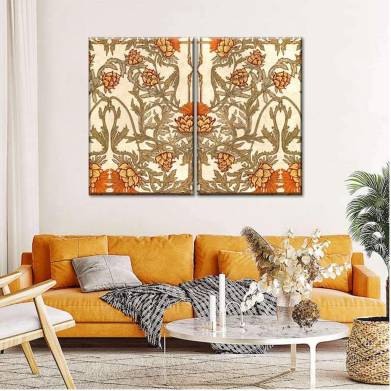The term “vintage design” refers to any item from another era with a significant and recognizable worth in the present era. With interior decoration, vintage styles can adopt the character or charm of the 1940s, the fifties, or even earlier eras. As a result, vintage designs are often timeless, with potent elegance laced with a lasting memory of the old—but beautiful ways.

Rustic is a broad term that covers a wide range of design styles. It is the polar opposite of modern and contemporary styles. The rustic design style is a style that embraces natural, old, organic, and possibly distressed. Rustic décor frequently includes rough woods with visible grain, jute or animal hide rugs and raw stone, Tuscan, and coastal interiors.
FEATURES OF VINTAGE DESIGNS
- Graceful and long curtains
- Floral upholstery, vintage fabric over bedding, throws, and pillows
- Soft, warm, and neutral color tones to accentuate the vintage décor
- Lace napkin, vintage ceramic ware, ashtrays, and lamps.
FEATURES OF RUSTIC DESIGN

- The design is rugged and stands out.
- Rustic allows the spirit of each piece to shine through rather than worrying about flawless lines.
- Outdoor, countryside, or farmhouse look.
DIFFERENCES BETWEEN VINTAGE DESIGN AND RUSTIC DESIGN
- A vintage theme is when the products and decor depict a specific era in history, or the items themselves are old. Rustic is often used to define an outdoorsy look or farm/countryside.
- Vintage denotes a period, whereas rustic denotes a location.
- Vintage interior design is typically romantic, with flowing lines and exquisite colors that evoke a sense of history. The design is usually basic and graceful, resulting in a relaxing and peaceful ambiance. Rustic interiors exude a sense of nostalgia that’s difficult to ignore and emphasizes nature’s natural components.
- Vintage decor provides for a well-organized jumble and a wide range of features. On the other hand, Rustic design is all about a no-fuss approach that emphasizes the beauty of natural materials and understated tones.
QUALITIES OF VINTAGE DESIGN
- Incorporating furnishings, accessories, and color palettes from a previous era into your home’s design and decor is typically referred to as vintage.
- Furniture should be arranged in a specific manner and correspond to the desired mood.
- Vintage styles allow you to create a specific mood and highlight your originality without spending a lot of money because it is readily available and straightforward!
QUALITIES OF RUSTIC DESIGN
- Side tables, accent chairs, and logs are the go to’s for a dash of rustic
- In and of itself, rustic décor is heavier, darker, and less sparse
- Form and shape are often simple, allowing the materials to take center stage
THE VARIOUS KINDS OF VINTAGE DESIGNS
Art Deco
Similar gold tones and velvet textiles became popular throughout the Art Deco period, but the shapes became stiff and more geometric. Finally, the Art Nouveau period’s warm colors gave way to regal tones like navy, aubergine, and jade.
Art Nouveau
Organic curves and curvature were still famous around the beginning of the century, albeit slightly more surrealistic. The Art Nouveau period was more artistic and ethereal than the Victorian period, dripping with wealth.
RUSTIC ENVIRONMENT
- Natural components in their purest form: The raw natural materials utilized in building and décor are probably the most critical aspect of rustic design. The more natural these pieces appear, the easier it is to locate and keep a consistent contemporary rustic design across the area.
- Wood Paneling: The architectural detail creates a warm environment in which you may enjoy your rustic style. Rustic paneled walls today give a completely different vibe. They can be light and airy, whitewashed, or made from salvaged wood.
Despite differences, both vintage and rustic designs are prevalent in today’s world. They tend to make a building and its surroundings more beautiful.
In addition, both patterns evoke memories that should be incorporated into contemporary designs.
In a home, a mix of old and rustic is virtually perfect.





